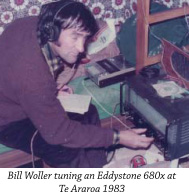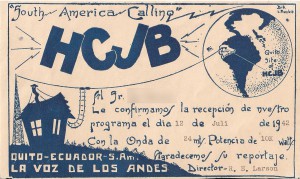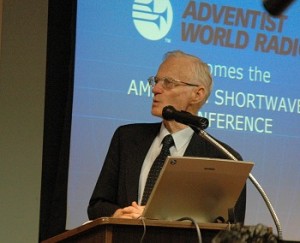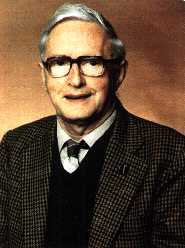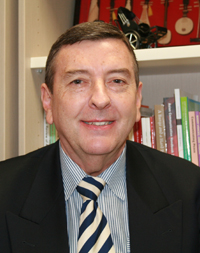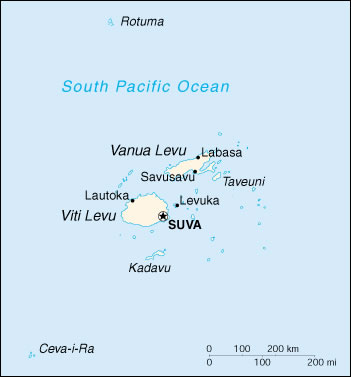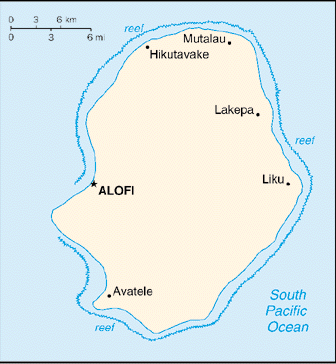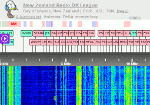Post Categories
Recent Comments
- Greg Hardison (Los Angeles) on Laurie Boyer
- Paul Ormandy on DX Times Magazine
- Dave Smith on DX Times Magazine
- Paul Ormandy on 1980 Motu Moana
- Bob Logan on 1980 Motu Moana
Archives
- October 2022
- March 2021
- December 2020
- September 2020
- August 2019
- July 2019
- June 2019
- February 2019
- December 2018
- October 2018
- September 2018
- August 2018
- July 2018
- April 2018
- March 2018
- January 2018
- December 2017
- November 2017
- October 2017
- August 2017
- July 2017
- June 2017
- April 2017
- March 2017
- December 2016
- June 2016
- May 2016
- April 2016
- December 2015
- November 2015
- October 2015
- September 2015
- July 2015
- June 2015
- May 2015
- April 2015
- March 2015
- February 2015
- January 2015
- December 2014
- November 2014
- October 2014
- September 2014
- August 2014
- July 2014
- May 2014
- April 2014
- March 2014
- February 2014
- January 2014
- December 2013
- November 2013
- October 2013
- September 2013
- August 2013
- July 2013
Copyright Notice
Except where copyright is specifically given to an author or originator, material on radiodx.com may be freely reproduced without permission, as long as full attribution to the author (where known), the New Zealand Radio DX League and radiodx.com are given
Search Results for: Pacific
1982 DXcursion Rarotonga
By Harry Weatherley, Melbourne
Put 18 DXers together on a tropical island, string out 250 metres of wire at 80 degrees, assemble some MW loop antennas, criss-cross your location with various longwires, add an impressive line up of receivers – and you have the makings of DXCURSION RAROTONGA 1982. Of course you add the sunshine at tropical temperatures, the warm and inviting waters of a Pacific lagoon, the occasional evening downpour, comfortable quarters – and you have all the ingredients which made a great week for 2 hams and 18 DXers in Rarotonga.
Comments Off on 1982 DXcursion Rarotonga
Bill Woller – Tribute
With regret we have learned from Mrs Marion Woller of the recent passing of long-time member and ace medium wave DXer Bill Woller of Opunake, after a long battle with bone cancer. Marion says that Bill was still having aerials put up and down into the last two months before he died and the Eddystone receiver that he bought back in 1956 was regularly transported from
room to room in search of the best and quietest place to be listened to.
Comments Off on Bill Woller – Tribute
A Great Mob
Part One: A Bunch of Individuals
The New Zealand Radio DX League Oamaru Convention Address 2008 – Presented by Frank Glen
Origins of DXing in New Zealand
By Barry Williams
As I began this project of recording the history of DXing in New Zealand, it quickly became apparent that I keep to my original aim and not end up writing a history of broadcasting in New Zealand. At times this was difficult as the history of the hobby of DXing is so closely intertwined with the growth and development of broadcasting.
Dates of Importance to NZ MW DXers

There have been a number of significant dates affecting MW stations and therefore DXers, in New Zealand.
1919: the first experimental radio station started broadcasting in Dunedin, New Zealand when founder “Toots” Mitchell was presented with a triode amplifying tube by his engineer friend Edward Meining. The opening song was “Robin Adair,” sung by Mitchell’s girlfriend at the microphone while Meining pedalled his bike the three kilometres from the sending station to his house where he had built a receiver. The station later became 4XD. They broadcast intermittently until 1921, then started regular scheduled programming two days a week. Those broadcasts led to the start of the Otago Radio Association. 4XD is still broadcasting, now on 1305 kHz and 99.2MHz often using the slogan “We were here first.”
Posted in History, Medium Wave
Tagged 2ZE, 4GM, Adrian Peterson, Australia, Blenheim, Gympie, New Zealand, Radio broadcasting, Radio Hauraki
HCJB Pifo – End of an Era
Now that station where the cubical quad was made famous is in jeopardy of permanent closure. Fifteen years I visited the HCJB Quito studios and the Pifo transmitter and antenna site.
The Quito studios and equipment were cast in the 50s; reel-to-reel tape decks, et all, but the Pifo site was quite something to behold; the Sterba Curtain array, the cubical quad and other antennas and then to literally walk into the 500,000 watt transmitter. The RF and modulator sections were on the left of the isle facing towards the control room, the power supply on the right immediately above a large swimming pool. The pool water was heated for the Pifo transmitter staff and family use by circulating it through the transmitter. There were four other smaller transmitters in the same building, a 100 watter, a 1 kW, a 50 kW and a 250 kW.
Some Old & Interesting QSL Cards
By Barry Williams
During the 1950s the Auckland Branch of the DX League met monthly at various members homes. We were a young and very keen and active group of Dxers. One of them was Des Gate who began DXing as a young man in 1939. Like so many young radio hobbyist at that time, active service during WW2 meant DXing ceased. By 1947 Des was again listening to the world.Life moves on, and we eventually lost touch when Des changed QTH. A few weeks ago though a mutual friend, we regained contact and Des now 80, visited me and kindly donated his collection of 200 odd QSL’s to my collection of DX history. Amongst Des’s QSL cards and letters, were some I have not seen before, but have read about. These are the QSLs from Forces Broadcasting stations, both US and British operating from countries in Europe, the Middle East, Asia and the Pacific.
Comments Off on Some Old & Interesting QSL Cards
Patagonia DXpedition
In Patagonia – A DXpedition at the End of the World
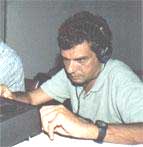
By Rocco Cotroneo, Brazil
What follows is the story of a test (or should I say a “taste”) for a future serious medium wave DXpedition at the end of the world, la fin del mundo, as Argentineans call their extreme Patagonia region. Since I live in South America, I had always wondered how conditions were like down there, if I could find a place comparable to legendary Nordic AM DX sites like the Scandinavian ones, Newfoundland, Grayland, or in this hemisphere, like New Zealand and Australia DXpedition spots.
Comments Off on Patagonia DXpedition
Barry Williams
The 15th June 1951 is the first date in my first log book, an entry for VLI6 Melbourne on 6150 kcs. However, I believe my first interest in radio, was born as a youngster listening to the BBC news during the war. Later, as a teenager, and with the help of my elder brother, I went through the phase of building crystal sets and one or two valve radios, always endeavouring to see how far I could hear. 2YA always seemed to be the limit. In attempting to hear further I turned to the family 6 valve Pacific dual wave radio and discovered shortwave.
This led me to start refering to Arthur Cushen’s shortwave listings in the Lamphouse Annual.
Comments Off on Barry Williams
Adrian Peterson
“I was born at Victor Harbour in South Australia, and grew up in Charleston, where my father had established a motor business just before World War 2. My Uncle Max Mudie, who lived near Victor Harbour, introduced me to the wonderful world of international radio. He used to build his own radio receivers, so I learned to do this also. Many of my earlier QSLs, Australian & overseas, were logged on these (uncalibrated!) home made radio receivers, using generally
the old English Cossor valves.
Comments Off on Adrian Peterson
Jack Searle – A Tribute
By Jack Searle , first printed in the October 1995 DX Times.
It is 60 years since I first tuned to what could considered genuine DX. For reasons that I can’t imagine my late father had been given or sold a battery operated radio which was obviously almost identical with the Neutrodyne receiver described by Bob Gilbert with its three large dials that controlled the three single gang tuning capacitors and the two wire wound rheostats that he mentioned. However it was of another make, SONORA boasting on the maker’s name plate ‘Clear as a Bell”.
Comments Off on Jack Searle – A Tribute
Introduction to Mediumwave DXing
I’ve been asked a seemingly simple question: How do you DX mediumwave stations? Well, the answer proved more complicated that at first thought and worthy of sharing, so here goes!
Let’s first look at what you’ll need for a typical DX session.
Receiver:
Comments Off on Introduction to Mediumwave DXing
Arthur Cushen
Memories of Radio Listening Over 60 Years
By Arthur Cushen |
Although I was interested in radio listening in the mid 1930’s, it was not until 1937 that I joined the N.Z. DX Club. The N.Z. DX Club was part of the Radio Record magazine, which was a private company. Editor Earl Reid realised that as well as publishing weekly programmes from the many B Class or private radio stations throughout New Zealand, there was an opening for radio listeners to contribute what they had been hearing. Those were the days of silent nights on some broadcast band frequencies and so there were a lot of North American signals being reported. This continued until 1939 and by that time the government had purchased all the private radio stations except two. And it also launched the NZ Listener, incorporating Radio Record. As The Listener was not interested in the DX Club, it eventually became a non-profit organisation, with Auckland and Southland being the main areas of the organisation.
Comments Off on Arthur Cushen
Arthur Cushen – Tributes
A Tribute
Arthur Cushen MBE 1920-1997Funeral & Tributes |
REPORT ON ARTHUR CUSHEN’S FUNERAL – 23 SEPTEMBER 1997
====================================================
A full church and strong singing of hymns chosen by Arthur, set the scene for the funeral service held last Tuesday morning at St Peters Methodist Church in Invercargill, less than 100 metres from the famous address of 212 Earn Street.
Tree Trouble?
Or – Alternative methods of getting aerials over tree tops
by Andy Gardner
Getting aerials across bush and scrub can be very time consuming and sometimes bad for your health, especially when you end up crashing through a gorse patch. While visiting Waianakarua for the equinox DXpedition, I arrived a day before Bryan and Mark, so during the day I got stuck into some aerial maintenance with Paul.
Paul uses a surfcaster and large lead weight to get a heavy fishing line across the tops of trees, then he pulls through the wire. Being on the receiving end when the weight comes sailing over the tree tops can be rather alarming. But it has to be done, as you need to know where the lead weight lands.
Comments Off on Tree Trouble?
Tiwai DXpedition 2003
For over 30 years, nestled between the southern Pacific Ocean and the Awarua Bay lagoon on tussocky, swamp country, the house at Tiwai Point has been a mecca for DXers.
For those who haven’t been there, it is an old farm house – made of concrete, with three bedrooms, a kitchen, living room, bathroom and a long drop outdoors. The nearest electricity is 5km away. A coal range heats the water. It is not as primitive as it seems, but that is not important – what is, is what can be heard from the house.
Comments Off on Tiwai DXpedition 2003
The Writing’s on the Wall
This article is copyright to radiodx.com (c). All rights reserved to the New Zealand Radio DX League. Author: Martin Hadlow
It looked like it would be an impressive place to visit. At the front gate, two guards stood with their tripod-mounted machine gun placed strategically atop what looked to be a table. The weapon was wrapped in a long belt of live ammunition. Steel combat helmets sat on the table alongside the gun and the guards gave us a cheery salute as we entered the compound. We were at the training centre of Radio-Television Afghanistan, a fine old building which had once been home to the first Radio Afghanistan station. Nestling in a back-lane in the old city of Kabul, just a stone’s throw from the bustling money market and sellers of clothing and fruit, the building wears its age gracefully, albeit with countless scars of bullet holes dotted across its façade.
Comments Off on The Writing’s on the Wall
The Voice of the Islands – Radio Fiji
This story is based on two articles that first appeared in the DX Times in March and April 1983.
Authors: Bryan Clark & Alan Roycroft
BROADCASTING IN FIJI – BRYAN CLARK
Broadcasting began in the Colony of Fiji in 1935, when Amalgamated Wireless (Australasia) Ltd opened station ZJV through its subsidiary Fiji Broadcasting Company. A studio and 500 watt transmitter was operated from a 2 room location in Suva. From this small beginning, the people of Fiji were gradually introduced to the marvel of “wireless’.
Radio Sunshine – Niue
You’ll find Niue (pronounced Nyou-eh) in the South Pacific to the east of Tonga. It has an area of 263 sq. km. (101 sq. miles) and a population of little more than 1750. Annexed by New Zealand in 1901, the island achieved self-government in 1974. It is reputedly one of the largest coral island in the world and like many Pacific paradises, has a thriving tourism industry.
Click the logo above to check out the”Visit Niue” web-site for more info.
Radio Sunshine
The Kiwi DX MW Experience
Getting Away From It All…
If you live in the Northern Hemisphere and were looking for a place to spend a couple of weeks intensive mediumwave DX therapy, then you’d probably consider, amongst others Lemmenjoki, Sheigra, Cappahayden or Grayland.
There is no doubt that each of these provide a better DXperience than struggling with the urban morass of depressing electrical noise and limitations for antenna space.
If you were to embark on a DXpedition to the Southern Hemisphere, you should seriously consider New Zealand as an option. So what do you need to know before making travel plans.
Comments Off on The Kiwi DX MW Experience

